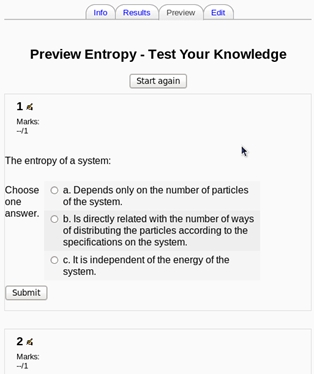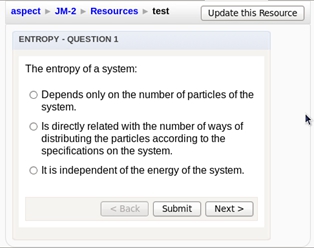Teachers and content packaging standards. Initial conclusions from the ASPECT evaluation
Article written by Agueda Gras-Velazquez, European Schoolnet

The ASPECT tests
The ASPECT project has organised three teacher workshops for a group of 40 mathematics and science teachers from Belgium (Flanders), Lithuania, Romania and Portugal. All three workshops have combined straight-forward assignments with more free-browsing activities in order to obtain first-hand, direct feedback from the teachers.
First, four national workshops organized in October 2009 focused on how teachers search for and discover resources contained in learning content repositories such as the Learning Resource Exchange for schools and what are their impressions about the LRE portal as a resource for their daily work. Next, an online workshop, organized in March 2010, analysed teachers’ search behaviours and their attitudes towards reusability and sharing of resources, i.e. under what kind of conditions would teachers trust or share resources, in particular when it comes to tags, ratings, authors (content providers), etc.
The third session, organised in May 2010 in Lisbon, concentrated on the integration of resources into learning platforms (VLEs) and content packaging. Here teachers were initially asked to create a normal lesson plan using the Moodle learning platform in a “traditional” way by combining different resources. Then they were asked to repeat the same task using resources that had been ‘packaged’ by ASPECT content developers using both the SCORM and Common Cartridge standards. Finally, teachers had also to think also about the use of digital credits to buy or access digital online resources.
The teachers
The participating teachers, 10 from each country, were selected by national teacher coordinators. Based on our initial impressions, the ICT skills of this group of teachers are, on average, higher than those of most European teachers. Probably, up to 80% of the ASPECT teachers could be considered to have advanced ICT skills. This is quite normal in a number of the projects run by European Schoolnet where we need to work with teachers who are prepared to make a significant investment in terms of their time.
There was, therefore, something of a “natural selection” of advanced teachers and the ASPECT validation results must be seen in this light. For example, ASPECT teachers have clearly higher levels of motivation that the ‘average’ teacher and are very eager to share their knowledge and expertise related to ICT use, learning resources and maths and science education in general. However, from another perspective, if ASPECT teachers find the project tasks and concepts too difficult or uninteresting, one can be reasonably certain that this will apply even more so to teachers with average levels of ICT competence.
Initial results
Among other things, the tests mapped the attitude of teachers towards use of digital resources and repositories and sharing of resources. Based on the tests, once a teacher figured out how to do a particular task, i.e. finding a particular resource through a combination of selecting a certain subject and/or interface language, the information was shared between all teachers within minutes and they could all do it. Generally, teachers were very keen to share knowledge but mainly among their own colleagues. Not surprisingly, language barriers tend to inhibit the free sharing and exchange of both knowledge and resources and, during the international workshop in Lisbon, the teachers needed some encouragement before they felt comfortable about interacting with colleagues from other countries.
It was good to observe though that the views on the LRE portal were generally positive; the LRE was considered a useful alternative to Google, particularly when teachers are faced with an overwhelming volume of information as a result of a Google search. ASPECT teachers, however, also suggested how a number of improvements could be made to the LRE; for example, by including more and better content from national resource portals, by improving classification and coverage of resources by subject and age range, and by extending the multilingual interface.
In the ASPECT tests the Portuguese and Belgium teachers particularly felt that they could not search the LRE portal in their respective languages. As one Portuguese teacher explained, if he searched for “vulcão”, he would expect to find all resources that have something to do with volcanoes, regardless of the language the resources are in. At present though only a limited number of words are included in the ASPECT vocabulary bank which is designed to facilitate these sorts of inter-language searches. In many cases, the only way to find the resource is still to carry out a search using English terms. To overcome this problem, some Lithuanian teachers translated the search terms into English before conducting a search which is something they are used to doing in their classroom practice.
The teachers also stated that their expectations in using a dedicated resource portal are higher than when using other Internet sources. This may also be a factor in why unsatisfactory search results do not frustrate teachers as much when they used Google as compared to the LRE portal; Google does not claim to be a resource portal that is specifically targeted at teachers like the LRE. Teachers, therefore, expect the LRE to provide exactly what it claims to offer - thousands of resources for each curriculum subject and for different age groups of pupils. The existence of so many options for filtering LRE resources similarly raises teachers’ expectations that they can expect to find a large number of relevant resources.
SCORM and Common Cartridge
A key part of the Lisbon workshop was focused on how ASPECT teachers understood and were able to work with different content packaging standards. The concept of content packaging had already been presented during the first national workshops. However, it was not until the third workshop in Lisbon, when the teachers could actually see and use some packages, that they were really able to get to grips with what content packaging was for and how different approaches to content packaging could impact on how they used and adapted learning resources.
Generally, ASPECT teachers reacted to SCORM resources in much the same way that they treated unpackaged content; for example, they did not see much difference between having a SCORM resource and a PowerPoint presentation. While they saw that a SCORM package could include more than one resource (see fig.1), they did not use it any differently than a PowerPoint; both types of content were integrated into a Virtual Learning Environment (VLE) as a single, unmodifiable entity (see fig. 2).
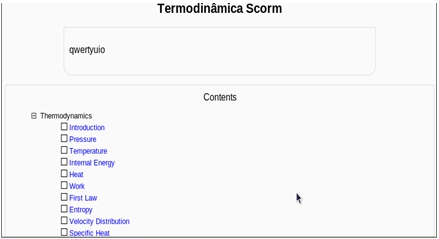
Fig 1: SCORM package appears in Moodle as a single entity.
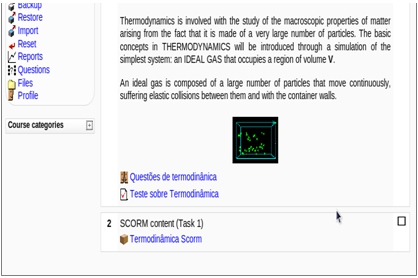
Fig 2: ASPECT teachers saw no difference between linking to a SCORM package, a PPT or image.
The larger the SCORM package, the more unwieldy it also seemed for those teachers
who wanted to adapt the resource or use only some parts or it.
In comparison, the teachers were very enthusiastic about Common Cartridge content packaging. After importing a CC package into Moodle, the teachers could remove parts that they did not need, edit the content and change the order of different resources (see fig. 3). Many teachers requested instructions on how to adapt Moodle to use Common Cartridge packages and some teachers expressed an interest in using Common Cartridge to package their own content in order to share it with other teachers.
Before the Lisbon workshop, I had anticipated that some teachers might be enthusiastic about Common Cartridge. However, while I thought teachers would appreciate the possibility of importing a cartridge into Moodle and then moving and/or changing some parts of the resource, I was unprepared for the high level of positive reaction that we witnessed.
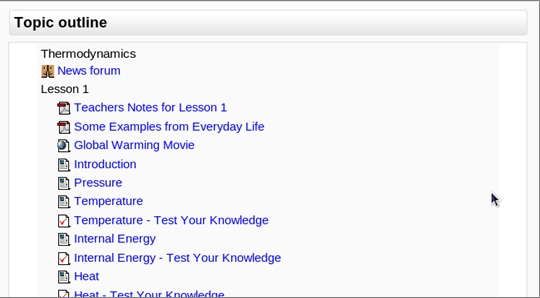
Fig 3: In Moodle a Common Cartridge package was split up into its constituent parts.
Each of these parts can then be individually moved and/or hidden.
A problem for the teachers was that they found it difficult to understand why SCORM and Common Cartridge packages had to be integrated into Moodle in different ways: SCORM has to be added through a “Add SCORM activity” function and Common Cartridge is added through a “Upload files” --> “Restore backup” function.
Most teachers had little interest in simply viewing and playing SCORM or Common Cartridge packages. On the other hand, apart from the option to upload the complete packages into a Virtual Learning Environment and have the different parts of the package converted into Moodle format, (as shown in fig. 4 for a questionnaire), the teachers liked the possibility of being able to embed only parts of a Common Cartridge package in the VLE, or even blogs or websites, which is not possible to do with SCORM packages (see fig. 5). While this second option did not take advantage of the VLE's features, teachers liked having the possibility to only integrate in their courses the parts of the cartridge that they liked or thought were relevant to their lesson.
|
Fig 4: After restoring a Common Cartridge package into Moodle, the different parts of the CC package are converted into the format used by Moodle. For example the questionnaire illustrated below makes use of the Moodle rating system. |
Fig 5: The same Common Cartridge questionnaire is embedded into Moodle. The questionnaire can be used independently from the rest of the package but it does not make use of Moodle features. |
The complete validation results
The activity of the teachers in all the three workshops has produced a significant quantity of data which is now being processed. The preliminary impressions and comments presented in this article will be supported with quantitative data which will be analysed and presented taking into account the teachers’ gender, nationality and ICT skills. The full report on the ASPECT validation will also look at teachers’ reactions to DRM and using credits to access LRE resources.The national reports and the complete ASPECT validation report are expected at the end of October and November 2010 respectively.
Suggestions
ASPECT partners appreciate that its findings are based on work with a very small focus group of teachers with relatively high levels of ICT skills. Nevertheless, when the data analysis is complete, the project hopes to be able to make some recommendations in terms of useful next steps.
For example, some preliminary suggestions include organising online training sessions or webinars for advanced users on how to adapt Moodle so that it can be used with Common Cartridge packages and on how to connect Moodle to the LRE portal. Less advanced teachers could also possibly benefit from a basic training on Common Cartridge that includes a step-by-step introduction on how to integrate CC packages into a Moodle environment.
With regard to content packaging standards generally, however, while we think it would be interesting and useful to familiarise teachers with the broad concepts, we also need to recognise that many teachers still struggle to obtain the basic IT skills which are more essential for their day-to-day work. In our opinion, therefore, training in content packaging standards may be something that remains of interest to a fairly small number of European teachers.
The photo was taken by Kati Clements

